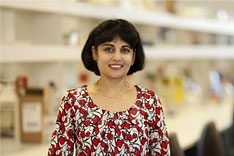
The Ingham Institute say they want to see more local women get “test tube ready’’ – pursue careers in science.
With just over three weeks to its third annual luncheon at Camden Lakeside Gold & Country Club on Friday, March 4, the institute have issued a clarion call for more women to choose science as a career.
Overall, women in science comprise over half of PhD students and level A researchers in Australia.
But this plummets to just 17 per cent with respect to women holding D level and positions in Australian universities, with many opting to leave the research workforce altogether.
There is also general imbalance with the number of female researchers securing research grants due to essential career breaks required for maternity leave and raising families.
Ingham Institute Pancreatic Cancer Research Group Director and 2015 NSW Woman of the Year Award winner Prof Minoti Apte is a passionate advocate for women in science.
[social_quote duplicate=”no” align=”default”]“The Ingham Institute luncheon is a fantastic platform to celebrate the tremendous talents of women in science at the Ingham Institute and around Australia,’’ Prof Apte said.[/social_quote]
“It also acts as a bit of a soapbox to call for better support at an industry level for those women who need to balance their careers with family.
“My path from medical student to senior academic while raising a family was challenging.
“I was lucky to have received a lot of support but inequality and disadvantage for women returning to work remains a big problem in Australia,” she said.
“Today, more than 50 per cent of people in higher education in science and other disciplines at university are women. Within the first few years after graduating they get jobs and start to progress their careers but then they want to take time off to have families just like me.
“What we need to do is to implement a system that encourages and facilitates a route for women to come back to the scientific workforce after their maternity leave.
“One example would be a return to work scholarship, such as one that has recently been instituted at my faculty, the Faculty of Medicine at UNSW.’’
More than 65 per cent of the scientific workforce at the Ingham Institute’s research facility are women.
And the institute is leading the way in terms of creating an encouraging environment for young female researchers starting their careers and senior researchers juggling a busy family life.
Institute research director Prof Michael Barton reinforced the advantages that a balanced gender representation in science and medical research can achieve.
“Medical research is all about answering questions and we need to muster all our resources,” Prof Barton said.
[social_quote duplicate=”no” align=”default”] “A mix of both genders in research teams is advantageous in encouraging broader and balanced thinking required to address major diseases like diabetes, cancer, mental health and injury.[/social_quote]
“As an organisation, we are also incredibly supportive of women balancing parenthood with research careers. Some of Australia’s leading academics and researchers are mothers so it is critical that we create an environment that is both encouraging and fosters career development.”
The 3rd annual Ingham Institute Hope luncheon at Camden Lakeside Golf & Country Club will celebrate International Women’s Day and highlight and applaud the extraordinary talents of women in science at the institute.
Senior researcher Matthew Malone will showcase his breakthrough research projects on diabetes. This work is making a big difference to patients suffering from diabetic foot disease, a debilitating condition that affects diabetes patients and can lead to amputation.



